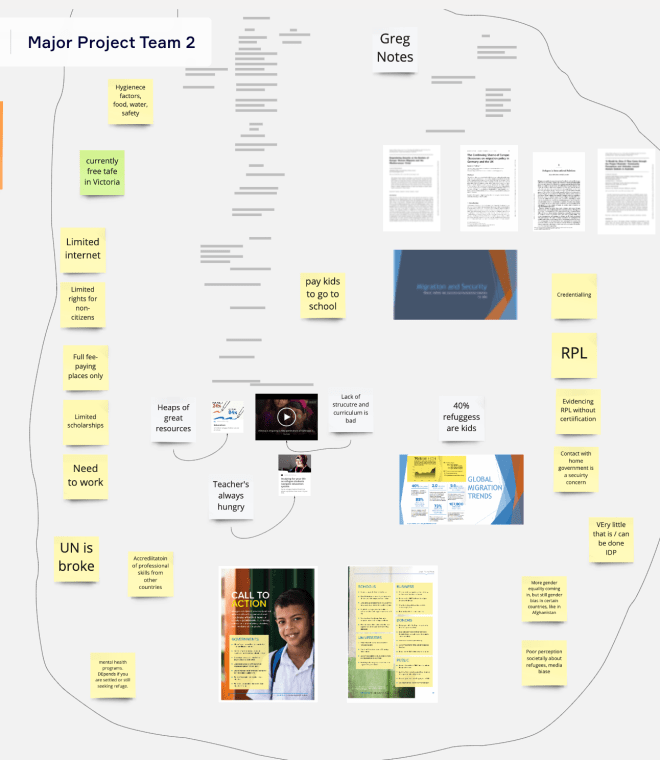Session 6 saw a shift of focus and brought us to week two, of this two week intensive course. It also saw a shuffling of groups and a new assignment topic, which was to solve the wicked problem of refugees lagging behind in terms of representation in higher education. We return to look in more detail at the Stanford design school model and our first lesson was to attempt to identify and empathise with our stakeholders. We were introduced to a few different tools to assist with this part of the design process which included tools aimed at understanding the wider context of the problem, including stakeholder maps and value chain analysis, as well as tools for really getting at the heart of the matter including empathy mapping.
Our team starting by doing some reading about the plight of refugees in accessing education which you can read more about here. And after tabulating our own notes from the reading and some broader research we produced some notes mine below include a link to this video.

You can see from the post-it notes some of the key-problems which began to emerge from the research. For me a couple of things really stood out, that it refugees living in camps between resettlement are often living in highly disrupted, and often dangerous and unhygienic conditions that are not conducive to engaging meaningfully in higher education.
The other large theme that emerged was that as refugees transition to for example Australia, Germany, the USA or other final host countries was that while refugees may have a partially completed qualification it might not be recognised in that final host country. Our team began to look closely at, and to empathise with our stakeholder group using some of the tools I have already mentioned which you can see below:

Here you can see our stakeholder map up top where we identify the various stakeholders involved as well as an empathy map that we used to look at what one of our stakeholders, that we personalised as a young refugee woman says, does, thinks and feels.
I recently stated a new engagement with the newly formed Department of Education Skills and Employment and many of our stakeholders on the Unique Student Identifier project, which was recently expanded to include Higher Education students, and plans to include primary school aged children will be students and parents of students looking for ways to ensure a seamless and unbroken path toward achieving their educational goals. As I begin to work with schools, teachers, students and parents this year I will remember these lessons from this session and really attempt to empathise with my clients in order to develop solutions that truly meet their needs.